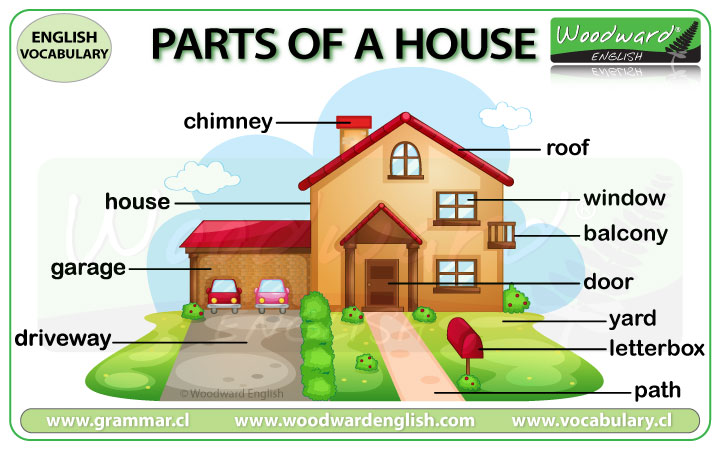English 3ro. basico II Unidad
Simple present



EL "SIMPLE PRESENT" SE UTILIZA:
- Para expresar hábitos y rutinas, hechos generales, acciones repetidas o situaciones, emociones y deseos permanentes:For example: I smoke (hábito); I work in London (permanencia); London is a large city (hecho general)
- Para dar instrucciones o indicaciones:For example: You walk for two hundred meters, then you turn left.
- Para hablar de eventos programados, presentes o futuros:For example: Your exam starts at 9.00 o´clock.
- Para referirse al futuro, detrás de algunas conjunciones: after, when, before, as soon as, until:For example: He'll give it to you when you come next Saturday.
¡Cuidado! El "simple present" no se utiliza para hablar de lo que está ocurriendo en este momento.
EJEMPLOS
- Hábitos y rutinasHe drinks tea at breakfast.She only eats fish.They watch television regularly.
- Eventos y acciones repetidosWe catch the bus every morning.It rains every afternoon in the hot season.They drive to Monaco every summer.
- Hechos generalesWater freezes at zero degrees.The Earth revolves around the Sun.Her mother is Peruvian.
- Instrucciones o indicacionesOpen the packet and pour the contents into hot water.You take the No.6 bus to Watney and then the No.10 to Bedford.
- Eventos programadosHis mother arrives tomorrow.Our holiday starts on the 26th March
- Construcciones de futuroShe'll see you before she leaves.We'll give it to her when she arrives.
FORMACIÓN DEL "SIMPLE PRESENT": TO THINK
| Afirmativa | Interrogativa | Negativa |
|---|---|---|
| I think | Do I think? | I do not think |
| You think | Do you think? | You do not think |
| He thinks | Does he think? | He does not think |
| She thinks | Does she think? | She does not think |
| It thinks | Does it think? | It does not think |
| We think | Do we think? | We do not think. |
| They think | Do they think? | They do not think. |
NOTAS SOBRE LA TERCERA PERSONA DEL SINGULAR DEL "SIMPLE PRESENT"
(he, she, it)
- En la tercera persona del singular, el verbo siempre termina en -s:he wants, she needs, he gives, she thinks.
- Para las formas negativa e interrogativa, se emplea DOES (= tercera persona del auxiliar 'DO') + el infinitivo del verbo.He wants ice cream. Does he want strawberry? He does not want vanilla.
- Verbos que terminan en -y : en la tercera persona del singular, se cambia la -y por -ies:fly --> flies, cry --> criesExcepción: cuando una vocal precede a la -y:play --> plays, pray --> prays
- Añadimos -es a los verbos que terminan en:-ss, -x, -sh, -ch:he passes, she catches, he fixes, it pushes.
EJEMPLOS
- He goes to school every morning.
- She understands English.
- It mixes the sand and the water.
- He tries very hard.
- She enjoys playing the piano.
Exercise: ingresar al enlace adjuntado y realizar el ejercicio, cada vez que avance tomar captura y subir al blog.
_____________________________________________________________________________
PARTS OF THE HOUSE VOCABULARY
Good afternoon guys! as you remember we have learnt the simple present, now you´re gonna learn about parts of the house vocabulary.
To start, a house has the following parts, outside:

And has the following, inside:

And in every side we find items like: lamp, bed, chair, sofa and so on...

Now, you´re gonna copy the vocabulary (only the words) on your book, and as a proyect you should elaborate a model about PARTS OF THE HOUSE, including all that is observed in the three pictures, and you should form sentences with this vocabulary using the simple present. When we return to classes you should do a presentation about this.
_____________________________________________________________________________
Good afternoon guys, as you remember in the first unit we learnt about future with will, okey, now you shoul write ten sentences using it and the parts of the house, for example:
Esther will watch TV at the living room. Date: Monday, april 20th. at 4: 00 o´clock.
_____________________________________________________________________________
_____________________________________________________________________________
Good afternoon guys, as you remember in the first unit we learnt about future with will, okey, now you shoul write ten sentences using it and the parts of the house, for example:
Esther will watch TV at the living room. Date: Monday, april 20th. at 4: 00 o´clock.
_____________________________________________________________________________
Conversation:
Exercise: Escuchen y sobre todo ponga atencion a los subtitulos de la conversacion anterior, seguidamente conteste las siguientes preguntas.
1. How many people live in the house?
2. What are their names?
3. What is the name of the first person they interviewed?
4. Why they don´t accepted to Anne?
5. What is the name of the last person? and why they decided to give the bedroom to she?
6. How many people are now in the house?
______________________________________________________________________________
LIKES AND DISLIKES
ESTOS SON ALGUNOS VERBOS QUE PODEMOS USAR FRECUENTEMENTE PARA EXPRESAR LO QUE NOS GUSTA U LO QUE NO.
- Love /lav/: encantar
- Like /laɪk/: gustar
- Dislike /dɪs’laɪk/: no gustar
- Hate /heɪt/: odiar
Usos:
Estos verbos se utilizan para expresar preferencias; es decir, cosas o actividades que nos gusta hacer (I like hamburgers / Me gustan las hamburguesas) y cosas o actividades que no nos gusta hacer (I dislike hamburgers / No me gustan las hamburguesas).
Estructura:
Estos verbos regularmente van acompañados de dos tipos de palabras: sustantivos y verbos.
1. Sustantivos
-I love cars. (Me encantan los carros)
-She likes movies. (A ella le gustan las películas)
-We don’t like sad music. (No nos gusta la música triste)
-We dislike sad music. (No nos gusta la música triste)
-He hates spinach. (Odia las espinacas)
Ejercicico: Copie la información el cuaderno de inglés y realice 10 oraciones utilizando los verbos, love, like, dislike, and hate con sustantivios asi como lo muestra el no. 1 de sustantivos.

Comentarios
Publicar un comentario